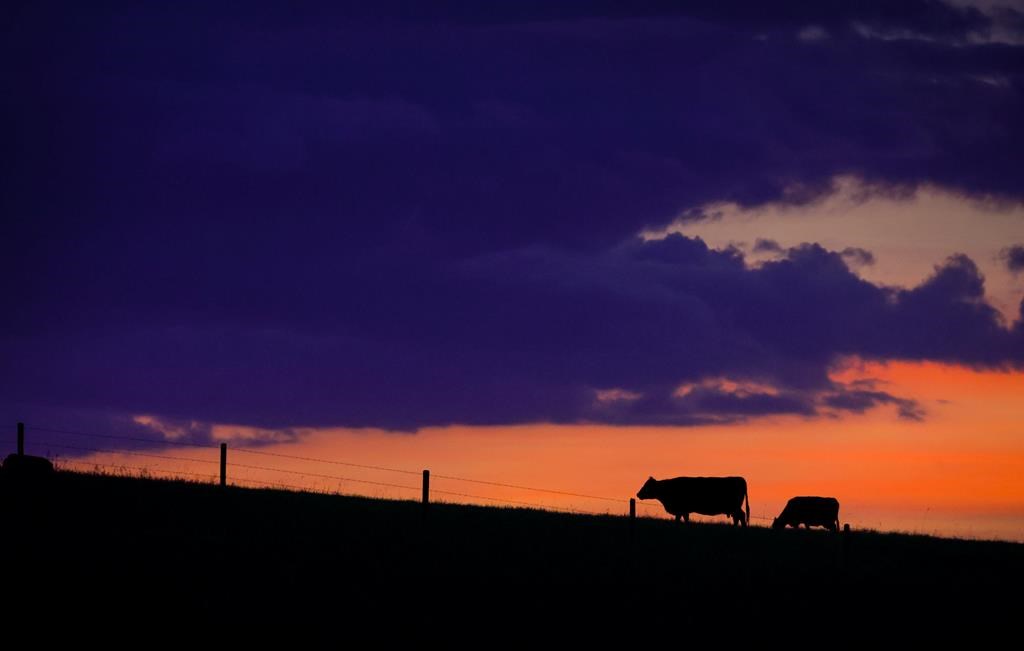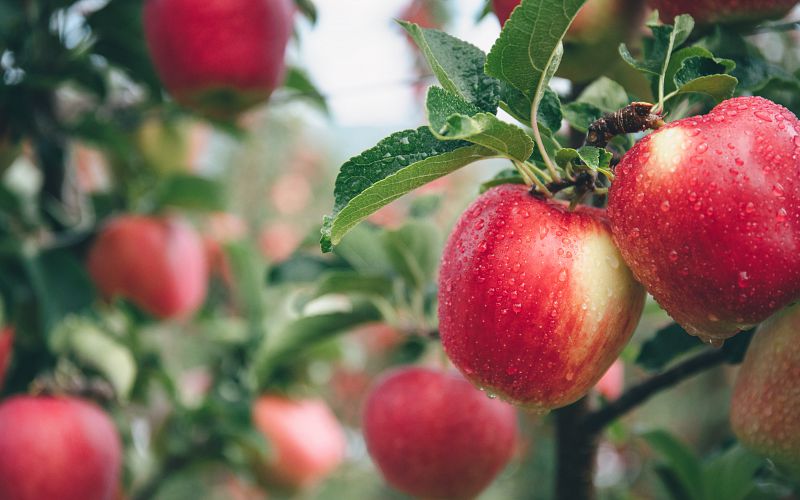‘We’re seeing dust storms’: B.C. ranchers, farmers struggle amid ongoing drought

Posted April 19, 2024 7:27 am.
Last Updated April 19, 2024 11:30 am.
What you pay for beef could depend on the weather in the coming weeks, as the farms and ranches that grow feed for B.C.’s cattle struggle with extremely dry conditions.
“We’re seeing dust storms. What little snow we had — if we were lucky to have it melt through when the ground wasn’t frozen — it’s just not enough,” said Serena Black with the B.C. Forage Council which represents farmers that grow the province’s hay and cereal crops.
“We’re definitely feeling the impacts of these extreme events, whether it’s the heat dome, massive floods, or the drought,” she told CityNews. “Each region has been impacted differently and I’d say we’ve been in a forage deficit for a few years now. Producers are starting to feel the crunch.”
Black says cattle producers are being forced to reduce or sell off herds as they scramble to find supplemental feed.
The BC Cattlemen’s Association says its members are anxiously waiting to see what moisture levels will be like over the next two months to determine how the forage on pasture lands will be affected.
“Snow cover and spring rains are the most important factors for summer grazing. If we don’t see the rains we will be faced with feed shortages throughout the industry that would require using supplementary feed which will create shortages for winter feed,” said general manager Kevin Boon.
“Snowpacks are down so we are expecting shortages of available water for irrigating and growing the hay and cereal crops required for winter feed. Keep in mind our feed reserves were depleted last year. If we don’t get enough, we would likely see a further sell down in our cattle numbers.”
Boon says they are hoping for the best but are doing as much as they can to prepare for the worst.
Meanwhile, Black explains that this past winter, many cattle producers were already reducing herds due to a lack of winter feed.
“A lot of our acres are in dryland production, so during these extreme conditions, we don’t always have the opportunity to supply extra. Even in our irrigated areas, there are water restrictions. It really limits the opportunities to get the forage growth that we need and depend on.”
Black says it’s expensive for B.C.’s cattle producers to source supplemental feed from other regions, which are struggling with extreme weather conditions and limited supply as well.
And she suggests this isn’t a short-term problem.
“With the limited snow that we’ve had — I’m based out of Prince George and we’ve seen it also throughout the central and southern Interior — without the snowpack, we are expecting to see a lot of winter kill,” she said.
“The freeze-thaw cycle is killing our stands … we are already experiencing those really dry conditions. Last year was really tough and I think this year isn’t going to be much better.”
Black says poor early growth will make it tough for ranchers to figure out where to put their herds out to pasture.
“Our producers are so dedicated in trying to develop resilient operations, but there are a lot of challenges in doing that and accessing the funds needed to do that. The programs are so competitive. We are expecting it will be tough going.”
She adds there is some hope around predictions for wetter conditions later in the year.
“Hopefully there can be some recovery but the central interior really depends on that early flush, that winter run-off and moisture coming through for their crop. It will be pretty hard to bounce back if we don’t get that in the spring.”
Black says there is some positive work being done to help mitigate the effects of a changing climate and increasingly extreme weather events.
“The great thing about B.C. is we have some great grazing opportunities and there has been some great work on trying to support advanced grazing and new technologies. We are really trying to figure out how to address those forage deficit programs,” she explained.
“It’s important for the public to know how much producers are investing in doing everything they can to address the challenges. The producers are feeling it every day. The commitment we’ve seen from our membership in adopting advanced practices designed to increase soil health, productivity, and resilience to extreme conditions are unprecedented.”
But she admits there is a trickle-down effect for consumers.
“If we are having feed shortages, it’s going to cost more to bring things in to make sure that we are caring for the livestock the way they need to be cared for. That can always go down to the consumer.”








